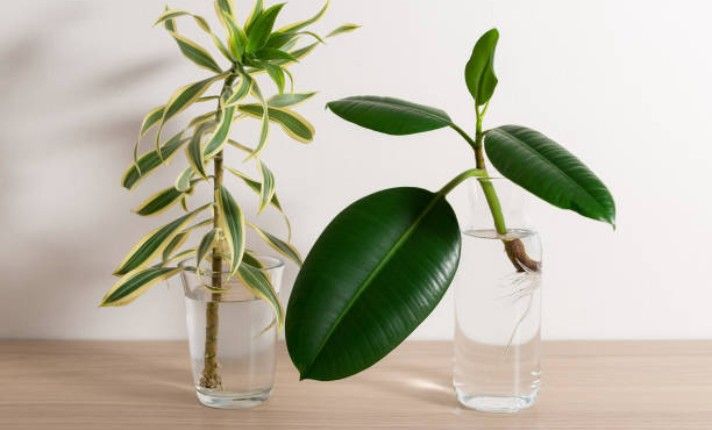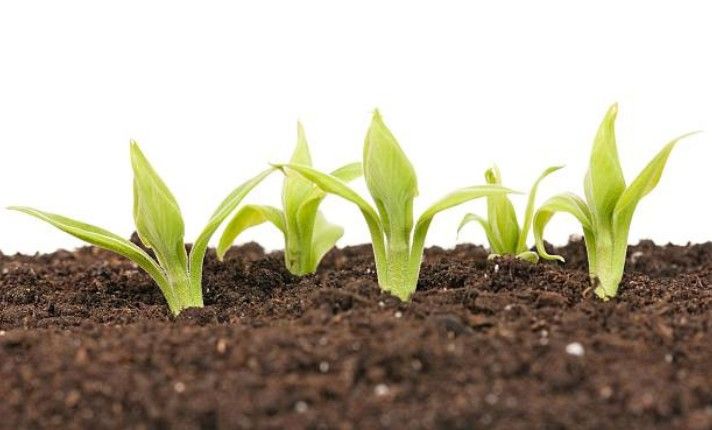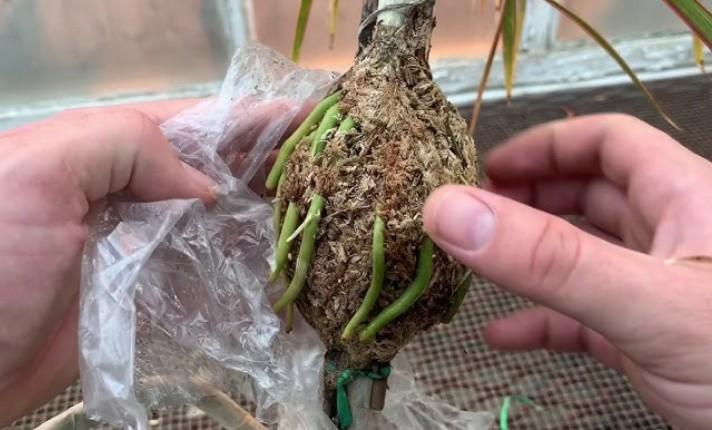Last Updated on April 7, 2025 by Jocelyn
Do you want your dracaena to grow bushier and have a beautiful look? To start, pick a healthy dracaena with strong canes and foliage.
Cut a piece from the bottom stems, leaving a good balance of leaves at the top. Place the cutting in water or soil and watch it grow. With time, it’ll flourish into a stunning new plant.
Avoid overwatering, as it can cause leaves to drop. Give your dracaena a warm, tropical spot with indirect light, and it will reward you with a lush, palm-like appearance.
Plus, these plants are relatively low care, making them perfect for indoor spaces.
To learn more about it, keep reading.
Table of Contents
ToggleWhat You Need to Know Before Propagating Dracaena
Propagation is a method of growing new plants from an existing one. It’s also a great way to maintain the size of your plant and prevent it from becoming too leggy.
Techniques used for propagating similar plants, such as crotons or pickle plants, can also be applied to Dracaena with minor adjustments.
Dracaena Varieties
Here’s a quick look at different types of Dracaena plants:
| Dracaena Variety | Description |
| Dracaena marginata | Known for its long, narrow leaves with red edges. It has a tree-like shape. |
| Dracaena fragrans | Broad, shiny green leaves with yellow or white stripes. Grows like a small tree. |
| Dracaena compacta | A smaller variety with compact, dark green leaves. Perfect for small spaces. |
| Dracaena reflexa | Features narrow, green and yellow striped leaves, often used as an ornamental plant. |
| Dracaena sanderiana | A type of Dracaena often grown in water, with bamboo-like stems and curly leaves. |
These are some popular varieties of Dracaena, each with its own unique look. You can propagate them all in similar ways!
Best Time to Propagate Dracaena
The best time for propagation is during spring or early summer. This is when the plant is growing faster and the stem is more active. It’s easier for the plant to heal and grow roots during this time.
Don’t try propagating when the plant is stressed or in the winter when it’s resting. A healthy plant is more likely to survive and grow strong after propagation.
3 Best Methods of Dracaena Propagation
If you want to grow more Dracaena plants, propagation is a great option. You can propagate them in water, soil, or even with a method called air layering.
Each method has its benefits, and with a little patience, you’ll soon have new plants to enjoy.
1. Propagate Dracaena in Water
To propagate Dracaena cuttings in water, start by cutting a side stem from the main stump. Make sure the cutting has a leaf node or junction where the roots will grow. Place it in clean water in a clear glass container.
Keep the cutting in bright indirect light and avoid direct sunlight. Change the water every few days. After one to three months, roots will start forming. Once the roots are strong enough, you can transplant the cutting into fresh potting mix.

2. Propagate Dracaena in Soil
You can also propagate Dracaena directly in soil. This method is often faster than water propagation and is effective for Dracaena propagation in soil.
First, prepare a well-draining potting mix in a container with drainage holes. Trim the lower leaves of the cutting and dip the end in rooting hormone to encourage root growth. Plant the cutting in the soil and keep it in a warm, moist environment.
Mist the cutting occasionally but avoid making the soil soggy. After some time, the cutting will develop roots and can be transplanted into a larger container.

3. Air Layering Dracaena
Air layering is a method you can use for larger Dracaena plants, such as Dracaena marginata. This technique is great if you don’t want to cut off a branch completely.
Start by making a small wound on the stem and wrapping it with sphagnum moss. Secure the moss with plastic wrap and a rubber band or twist tie. Keep the moss damp and in a humid space.
Over the course of a few months, roots will form. Once the roots are strong enough, you can carefully remove the new plant from the mother plant and place it in prepared soil.

Step-by-Step Guide to Dracaena Propagation
Propagating Dracaena is simple, and you can do it in two main ways: through top cuttings or stem cuttings.
Both methods are quick and effective, and the one you choose will depend on your personal preference.
In my case, stem cuttings rooted faster in water during spring compared to soil in winter.
Here’s how to do it step-by-step:
Top Cutting Method
- Select a healthy Dracaena plant and find a strong, well-grown top to cut.
- Using a sharp, sterile knife, cut off the top portion of the plant, about 4 inches tall.
- Remove any lower leaves from the cutting to expose the stem.
- You can apply rooting hormone to the cut end, though it’s optional, to speed up root development.
- Place the cutting in moist soil or a jar of water, making sure the cut end is submerged.
- Keep the cutting in a warm, bright spot with indirect light.
- After a few weeks, check for root growth by gently tugging on the cutting. Once you feel some resistance, it’s ready to be planted in a pot with drainage holes.
Stem Cutting Method
- Choose a healthy Dracaena stem and cut it into pieces, each about 4-6 inches long.
- Make sure each piece includes at least one leaf node, which is where the roots will form.
- Place the stem pieces in moist potting mix or water with the leaf node submerged.
- If using water, change it regularly to keep it clean and fresh.
- Put the cuttings in a bright location with indirect sunlight for the best growth.
- Wait a few weeks for roots to appear. You’ll know they’re ready when you feel resistance when gently tugging. Once roots have formed, transfer them into a pot with drainage holes.
How Long Does It Take for Dracaena to Root?
The time it takes for Dracaena to root depends on the temperature and the type of cutting. In warm temperatures, it may take around two to four weeks for the cutting to develop roots.
However, in colder conditions, it can take up to months. The process will be slower in winter and longer during colder weather.
In general, cuttings from older plants may root faster than those from younger ones. The age of the plant matters, so a well-established Dracaena can develop roots quickly.
If it takes a bit more time, don’t worry. You’ll have a healthy, rooted Dracaena soon enough.
How to Care for Your Newly Rooted Dracaena
Once your Dracaena has rooted, it’s time to give it the best care possible. Here’s how:
Watering Your Dracaena
When your Dracaena is newly rooted, it’s important to water it properly. Make sure the soil feels a little dry before you water again.
Underwatering can cause drooping leaves, but overwatering can lead to root rot. Keep the soil moist, but never soggy.
Light and Temperature Needs
For healthy growth, place your Dracaena in a spot with bright, indirect sunlight. Direct sunlight may cause the leaves scorch.
Also, make sure the plant is in a consistent temperature range of 70-80 degrees Fahrenheit. Avoid areas with drafts or direct heat.
Feeding and Fertilizing
Feed your plant using a half-strength fertilizer. It’s best to fertilize once a month. Be careful not to over-fertilize, as it can harm your plant.
During the winter months, when growth slows down, reduce the amount of fertilizer.
Cleaning and Preventing Pests
Keep your plant clean by wiping its leaves with a damp cloth. This helps to remove any dust and prevent pests like aphids and mealybugs.
Regular cleaning also keeps your Dracaena looking healthy and fresh.
Common Problems in Dracaena Propagation
When propagating Dracaena plants, there are a few common issues you might face. Addressing these problems early on can make a huge difference in the success of your propagation.
Below is a table summarizing the common problems, their causes, and how to avoid or resolve them:
| Problem | Cause | Solution |
| Transplant Shock | Cutting is not hydrated properly or moisture levels are too low. | Keep the cuttings well-hydrated and ensure the soil has proper drainage. Avoid letting the soil dry out completely. |
| Root Rot | Excess moisture and poor drainage. | Ensure good drainage in the pot, and don’t overwater the plant. |
| Low Humidity | Air is too dry, preventing roots from forming. | Increase humidity around the plant by using a humidity tray or misting. |
| Nutrient Deficiency | The soil doesn’t provide enough nutrients for root growth. | Use nutrient-rich soil and consider adding a gentle, balanced fertilizer for best results. |
FAQ’s
Q: Where Do You Cut Dracaena for Propagation?
A: Cut the Dracaena just below a leaf node, keeping the cutting 6-8 inches tall. Use tools cleaned with hydrogen peroxide to discourage disease and pests.
Trim off lower leaves near the node to prepare for propagation.
Q: How to Fix a Leggy Dracaena?
A: If your Dracaena looks leggy, it’s time to cut back its growth. Trim the canes above the nodes using clean tools. This keeps the plant neat and helps it grow again from the old stem.
Q: How Do You Encourage Dracaena to Branch?
A: Cut the top of your Dracaena to promote growth below the cut. Tie a string to the branch, pull it down, and use a weight to hold it at the right level.
Replant the leaning plant to balance its shorter side and keep it growing well.
Q: How Long Does a Dracaena Plant Last?
A: Most dracaena houseplants can live 10–15 years indoors with optimal conditions and regular repotting. Outdoors in subtropical zones, they often live longer and grow into larger plants.
Different species may have varying lifespans, but proper care keeps them healthy.
Q: What Do Healthy Dracaena Roots Look Like?
A: Healthy Dracaena Roots are smooth, branching, and thin, spreading horizontally through the soil. They’re efficient at absorbing nutrients and water, keeping the plant strong.
These roots are characterized by their unique shape, making them adapt well to different conditions and pot sizes.
Conclusion
Propagating dracaena plants is an easy way to expand your indoor garden. Start by cutting a healthy stem, then place it in water or soil to grow roots.
Keep the cutting in a warm spot with indirect sunlight and watch as roots develop in a few weeks. Once the roots are strong, transfer the plant to a pot.
Ready to grow your own dracaena plants? Get started today and enjoy the process! Follow us on social media for more helpful tips and tricks to care for your plants and keep your home green and fresh.

